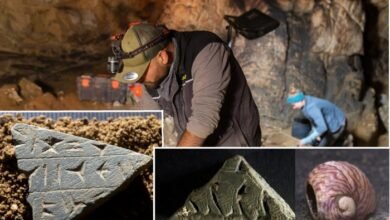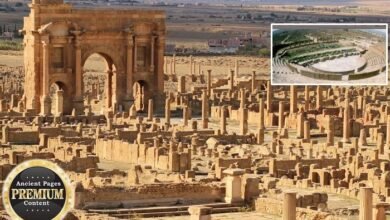Easter Island’s Undeciphered Rongorongo Script Is Evidence Of An Independent Writing System

Jan Bartek – AncientPages.com – Easter Island’s enigmatic Rongorongo script remains undeciphered, but a new study offers evidence that it represents an independent writing system.
Moai on Easter Island. Credit: Adobe Stock – modestlife
Rapa Nui is famous for its many archaeological mysteries, especially the huge stone figures known as moai that have captivated both researchers and the general public for years. For a long period, it was assumed that these gigantic statues were just heads. But in October 2011, a game-changing revelation came from the Easter Island Statue Project’s Season V expedition. They unveiled stunning images showing that these statues had bodies extending far beneath the surface – much deeper than anyone had previously thought. Today, we know that Easter Island’s statues have bodies covered with unknown ancient petroglyphs.
Rapa Nui, or Easter Island as it’s commonly known, is also famous for its unique script found on less than 30 wooden artifacts. However, the question remains: was this script created before Europeans set foot on the island in the 18th century AD?
Rapa Nui tablet and location. (A) 3D model of the Rapa Nui tablet D Échancrée. (B) Enlargement on the script. (C) Map of Rapa Nui (produced with OpenStreetMap, available under the Open Database License). Credit: Scientific Reports (2024). DOI: 10.1038/s41598-024-53063-7
Upon their arrival, Europeans discovered not only enormous stone heads but also indigenous people and wooden tablets featuring mysterious carved scripts. Unfortunately, oral histories from the original inhabitants have been lost over time due to disease outbreaks, enslavement, or violent conflicts.
In an effort to learn more about the enigmatic Rongorongo script and Rapa Nui’s writing system, scientists have employed radiocarbon dating techniques on four wooden tablets preserved in Rome, Italy.
Since its discovery in the late 19th century, numerous efforts have been made to decode the intricate Rongorongo script of Easter Island. Rongorongo script is quite complex and is believed to contain a mixture of symbols, and phonetic (sound making) features. In the absence of something like a Rosetta Stone, an artifact that contained both a known and unknown text, it is exceedingly difficult to decipher any ancient script.
“The exact period in which Rongorongo developed remains unknown. The question is of crucial importance, as it implies the possibility of an independent invention of writing, similarly to what happened in other parts of the world where writing was an original creation, e.g., in Mesopotamia, Egypt, China and Mesoamerica.
If Rongorongo predates the arrival of external travelers, it could represent another, and the latest, invention of writing in human history,” the researchers write in their study published in Nature.
3D model of tablet B Aruku Kurenga (sample P002), with a high quality texture (a) and a high resolution geometry (b), as presented on the INSCRIBE 3D Interactive Web Viewer (www.inscribercproject.com/3d_viewer_home.php).
“Given the circumstances of preservation, we cannot assume a much later date of engraving than that in which the tree used for the tablet was cut. Our dates confirm for three (Tablet A, B, and C) of the four tablets a scenario in which the local population wrote down their texts on wood boards coming from external sources in a period that post-dates the arrival of the Europeans.
This, however, does not imply that the script they used was not invented. Indeed, the glyphs differ from any known script and, even in terms of inventory, they have no close parallels.
If Tablet D’s exceptional age indicates that the local population of Rapa Nui could have invented a writing system without influence or input from external agents, Rongorongo could represent one of the few independent inventions of writing in human history, adding a layer of complexity to the narrative of the cultural and historical development of the Rapa Nui inhabitants” the scientists conclude in their study.
The study was published in the journal Nature.
Written by Jan Bartek – AncientPages.com Staff Writer








